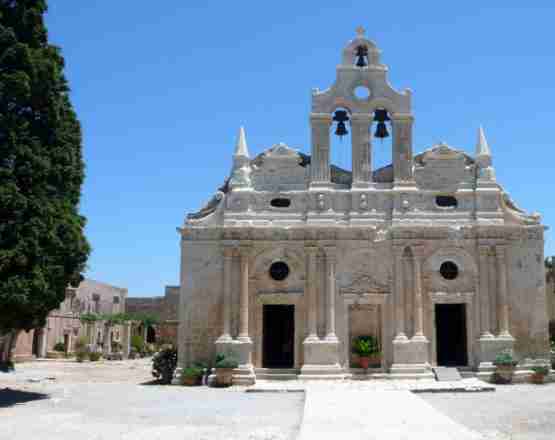AUGUST
06 August
The Transfiguration of Christ .. in Greek he is Afendis Christos (Christ the Lord).
Churches on the mountain peaks of Crete are flooded with pilgrims …
In Crete, four feast-days are celebrated on mountain peaks: Transfiguration of Christ, Holy Trinity , Holy Cross and Prophet Elias.
The mountains .. the High Grounds .. have for many different peoples and creeds represented the way to approach a Higher Being – in what more natural environment would one expect to encounter such a Being?
In Crete the people of this island have established sacred place on peaks going back a very long way before Christianity: the Minoans established them over four thousand year ago. Today near Heraklion, on the Holy Mountain of Iouktas-Giuhtas, we have the Bronze Age peak sanctuary at the top to the north, not far from the Holy Monastery of Afendis Christos; whilst further down the slopes are a cave used by the Minoans, and at least two other Stations created by the Minoans (Aloni and Anemospilia)
The view of the valleys below all the way to the sea is breathtaking from here… Traditionally during the celebrations the Cretans offer up the first-fruits from the grape harvest, women sweet bread.
15 August
The Dormition of the Virgin Mary.(The Easter of the Summer for the Cretans)
In this special celebration of Greek Orthodoxy, the pilgrims in Crete begin fasting (from 31 July); some will walk for days to reach the Monastery and to sleep under the starry skies, performing their Tama (vows).
Huts are made out of bamboo and tree branches and the pilgrims settle down together around those Holy Monasteries dedicated to the Virgin Mary. Food is prepared by all concerned and shared, after days of fasting, on the 15 August – which marks the climax of the festival.
After the celebrations have come to an end, caravans of people depart.
In August, the Cretans offer to the Churches of their parish the sacred herb basil. The plants destined were chosen back in May and by August should be thriving and a good gift to take to the church.
The women of the community in August will predict the weather of the coming winter and the following year.
24 August
Saint Eftychis of Selino
The Holy Monastery of Saint Eftychis goes back to the Venetian Period in Crete.
In Greek Ef = Good, and Tychi = Luck .
A Saint of Good Luck that in the Greek Language is the definition of happiness!
25 August
Saint Titus: the First Bishop of Crete and disciple of Saint Paul.
The Patron Saint of Heraklion, Crete.
In the cathedral in Heraklion, dedicated to Saint Titus, on this day a tremendous feast takes place. The 25 August also has a dark side: it marks the anniversary of the massacre that took place in 1898 in Heraklion under the Ottoman rule.
27 of August
Saint Fanourios, the Cretan Saint (He who finds, he who shows)
When one needs guidance to see one’s way forward, to find something, to recover something missing – this is the Saint you pray to. Saint Fanourios can help you find solutions, things lost (from a flock of sheep to a pet lamb), and even someone to share your life with.
We have plenty of churches dedicated to this useful Saint: and he is often depicted in frescoes in all sorts of churches on the island.
A sweet cake is given to the Saint – and all will be revealed! On 27 August, the Cretans either express gratitude for help rendered – or ask especially for aid.
On the mountain plain of Nida, Saint Fanourios plays a serious role in the summertime community of the shepherds in resolving disputes …no one dares to lie in front of his icon in his little church: all that has gone astray must be recovered – and the act forgiven.
29 August
Saint John Rigologos (the Shiverer) .. better known perhaps as John the Baptist.
On this day in Crete, neither fish is consumed (even though it is often served in fasts), nor olive oil, nor tomatoes.
According to tradition, after Saint John was beheaded, his body shook and shivered. Thus anyone who shakes can be cured if they fast on this day and pray to Saint John Rigologo: e.g. those who suffered from malaria.
31 of August
The Holy Belt of the Virgin Mary.
Traditionally, the Holy Belt will cure people from plagues .. both illnesses, and those brought about by such as swarms of locusts. The belt also protects women during pregnancy and labour.
A belt, which is something worn by both sexes, forms a circle around the body – protecting the body metaphorically. The same thinking will permit an unbroken string to encircle and protect – say a church .. right the way up to a village.

